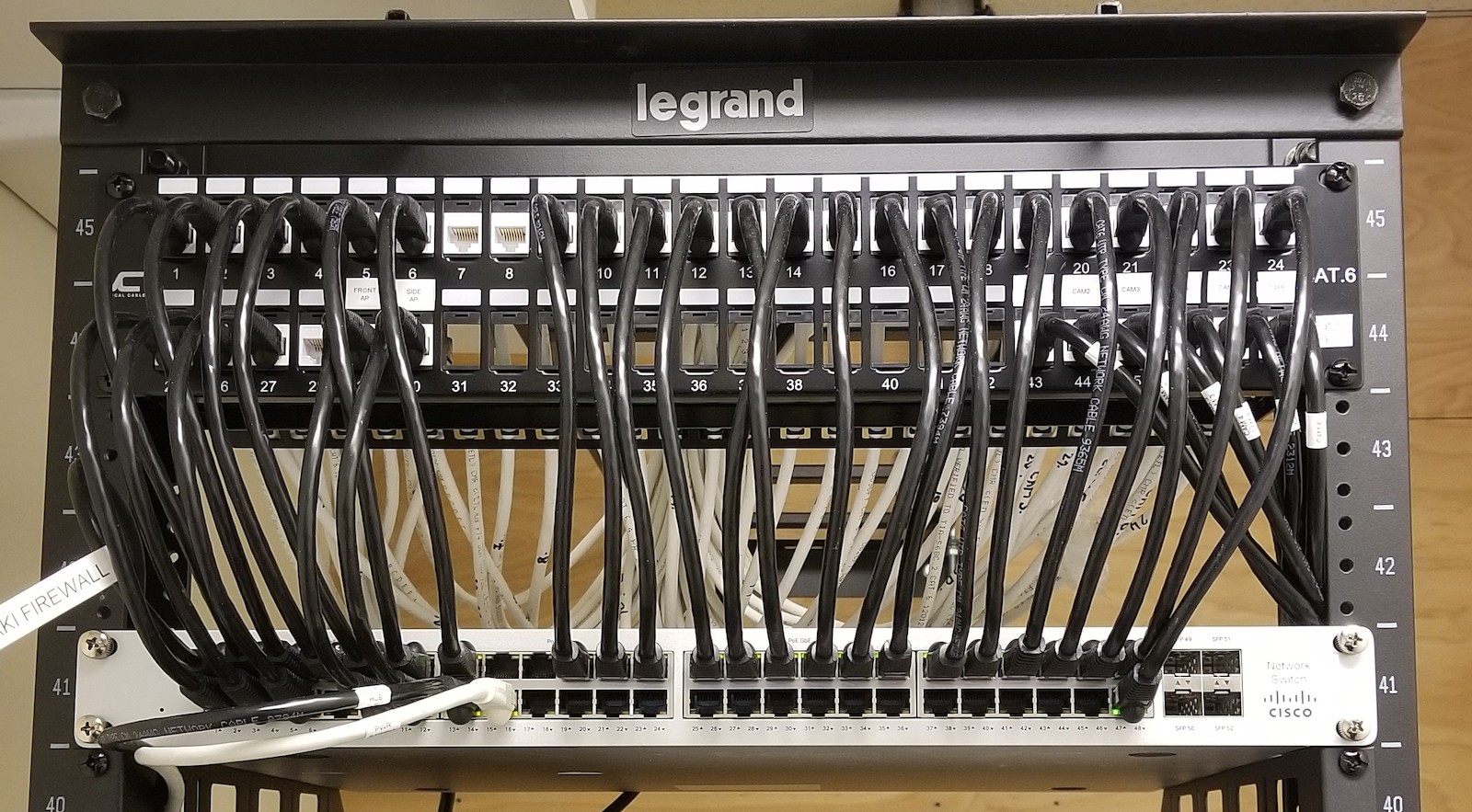The Difference Between CAT6 & CAT6A
Advancing from phone lines and cables to high-speed cable and wiring today was an achievement in technology and ingenuity. However, it has also led to a proliferation of multiple types of cables, making it necessary for structured cabling experts and technicians to understand and employ the proper wiring for the job at hand.

This article will review the differences between two of the most commonly used cables today, Category 6 (or Cat6) and Category 6A (or Cat6A). We’ll also examine what they are used for and when they should be used in residential and commercial projects.
Evolution of Networking Cables
The need for cables that could go beyond voice and ethernet became apparent around the very end of the 20th Century. Cat5 cables were introduced in the mid-1990s. They could support network speeds up to 100 Mbps. The next iteration was the Cat5e which was able to support applications run on Gigabit networks.
However, with so many new applications and devices demanding access to wireless and wired networks at home and work, a new cable with more capacity was needed. This need is what precipitated the creation of the Cat6 and Cat6a cables. Cat6 has become the norm for almost all residences and businesses within the last decade, while Cat6a has just recently become more common in commercial settings due to its bandwidth.
Cat7 and Cat7a cables do exist and are meant to handle even more speed and increase bandwidth, but they are not yet widely adopted.
Cat6 Cables
Initially, Cat6 cables were more expensive than the previous Cat5e when they were first introduced, so the cost prevented widespread adoption. However, in the past 5-8 years, the prices have become more inline and are no longer a real consideration for contractors, commercial property owners, or homeowners when considering the installation of structured cabling.
Cat5e cables and Cat6 cables have a maximum usable distance of 100 meters; however, they have drastic differences in capacity. A Cat6 cable can handle up to 10Gbps (up to about 55 meters) and has a bandwidth of 250MHz. By comparison, the Cat5e can only handle up to 1Gps and has a bandwidth of 100MHz.
The real benefit of this added data rate and bandwidth is speed. Streaming or downloading data on a Cat6 cable is simply faster than a Cat5e.
Cat6a Cables
By contrast, Cat6a cables are able to handle more bandwidth and faster data speeds. Cat6a cables have a bandwidth up to 500MHz. Their data rate is still 10Gbps, but there is no distance limitation, meaning you will get the same data rate for the entire length of the cable (up to 100 meters).
Uses for Cat6 and Cat6a
While it isn’t uncommon for residential properties to still be using Cat5e cables and possibly even use them in new residential construction, the prevailing wisdom among structured cable technicians is to use Cat6 for all residential projects.
Depending on the size of the home, the limited range of the data rate, from 37-55 meters, isn’t normally a problem. Also, because the price is now comparable to Cat5e, there’s no longer a financial consideration when choosing between the two for installation.
Cat6a has become the de facto standard for highly dependent data facilities, like educational institutions and healthcare facilities. It is also recommended for any building that has a wireless network that runs on 10 Gigs and can provide better performance for Power of the Ethernet (PoE) facilities. Because these buildings usually are larger, knowing that data speeds will stay the same across the entire cable length (100 meters) and not degrade is a much better choice.
Installing Cat6a cables is also considered a way to futureproof a network. While Cat6 cables are serviceable, even for some larger facilities, the speed at which the technology changes make it more reasonable to use the best cable currently available, and that is Cat6a.
Additional Considerations for Cat6a
Cable Type
Cat6a cables come both shielded and unshielded. A Cat6a cable contains four pairs of twisted copper wires. With shielded cables, all four pairs of wires are further surrounded by an outer foil shell. An unshielded Cat6a cable does not have this outer foil. Shielded Cat6a cables must also be grounded.
All Cat6a cables, whether shielded or unshielded, also require specific wall panels, jacks, and outlets.
The most significant benefit of choosing a shielded Cat6a cable is its performance. Shielded or F/UTP cable can help reduce electromagnetic and radio frequency interference. For home installation, shielded Cat6a may not be as necessary. Still, for commercial installations with a high density of other businesses and cable infrastructure nearby, shielded Cat6a is the better choice.
Testing
Another significant difference between shielded and unshielded Cat6a cables is the level of required testing to ensure proper installation and safety. This testing can be done with configured network testers which provide a clear Pass/Fail signal depending on the result.
The more time it takes to install the structured cabling, the higher the price point. And additional testing generally brings an added cost. But the trade-off is more speed and higher data rates, which are necessary for most commercial and residential projects today.
Finding an Expert Structured Cabling Installer
As this article illustrates, there are many details to consider when looking to install Cat6 or Cat6a cables in a residential or commercial property. The best way to ensure success and ensure that everything is safely and adequately installed is to find an experienced installation technician.
In Southern California, Kudox Network has installed and serviced structured cabling for nearly 20 years. We have developed a reputation for hiring professional and knowledgeable technicians who know how to accurately and efficiently get the job done while also working with homeowners or contractors to provide the level of networking that they need. Contact us for more information.
